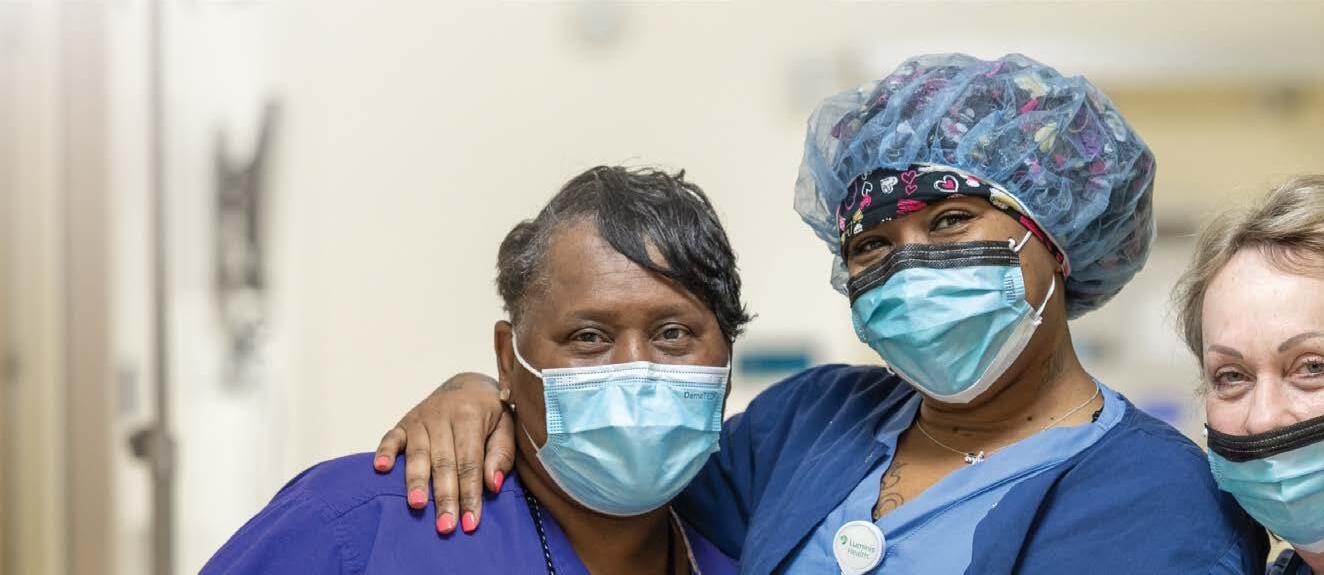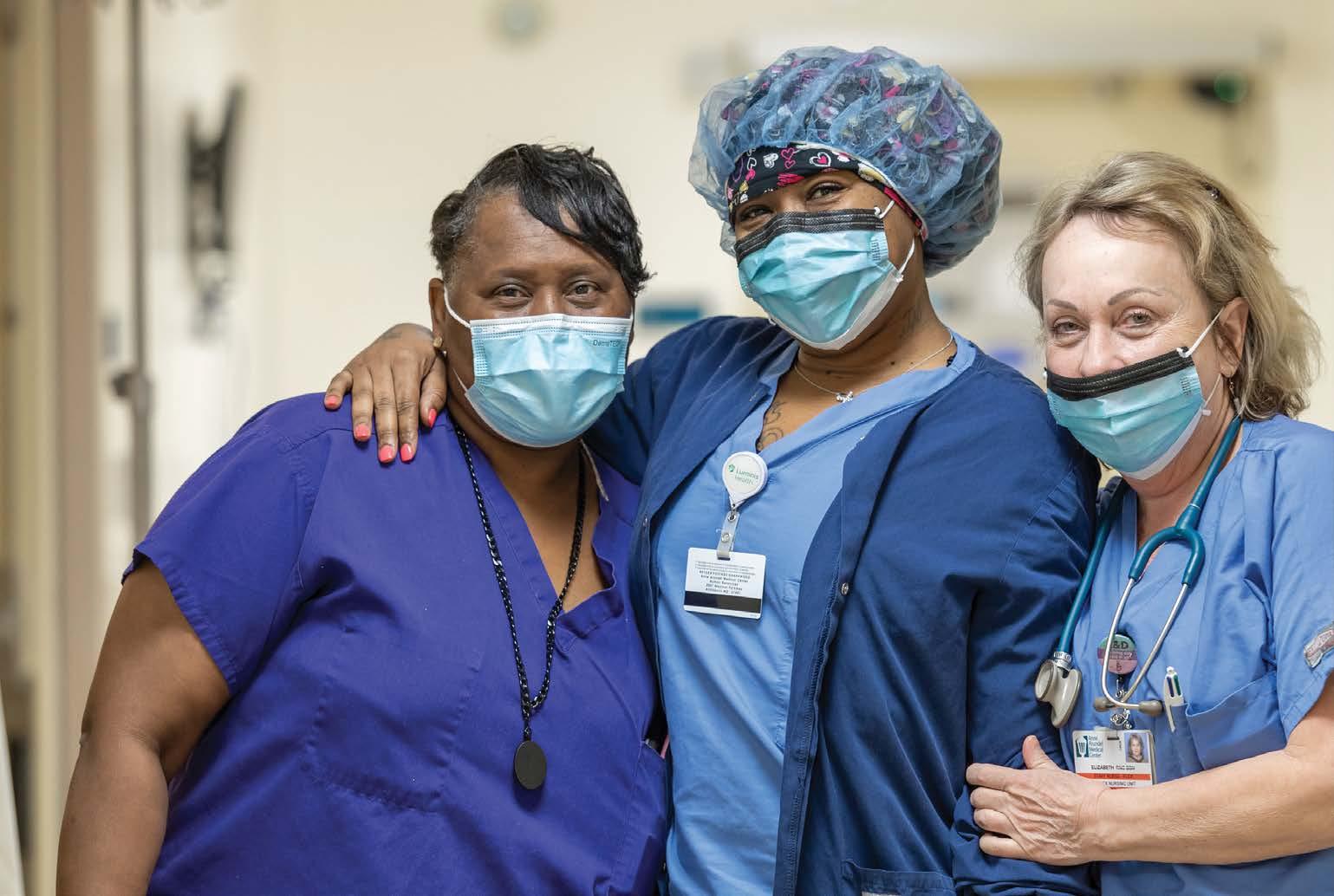Salute Nurses to 2023

Special Advertising Supplement













































































































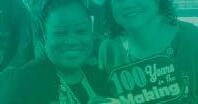

















































































































































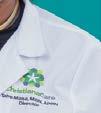








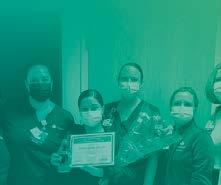
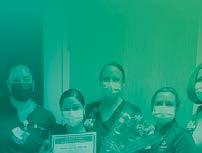





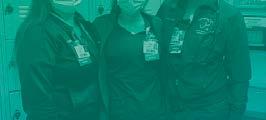

























Special Advertising Supplement







































































































































































































































































































Hazel Johnson-Brown was a determined woman who wasn’t going to let anyone tell her she couldn’t be a nurse.
Not only did she achieve that title, but Johnson-Brown would go on to become the first Black female general in the U.S. Army in 1979 and the first Black chief of the United States Army Nurse Corps.
Born in Pennsylvania in 1927, she was one of seven children. All of her family members worked on the farm and held other jobs. She took on domestic work when she was 12, but even then knew she wanted to be a nurse.
When she graduated from high school, the West Chester School of Nursing rejected her because she was Black. She moved to New York and studied at the Harlem Hospital School of Nursing. Returning home, she worked for the Philadelphia Veterans Association and learned about the Army Nurse Corps, which President Harry Truman had racially integrated seven years earlier.
She joined the Army Nurse Corps and her first tour was in a hospital in Japan. She worked in operating rooms and trained nurses who were on their way to Vietnam. She was once assigned to go to Vietnam, but became ill. The nurse who took her place was killed in the surprise attack on the unit shortly after they arrived in the country.
Johnson-Brown briefly left the Army to earn her nursing degree from Villanova University. She then returned to active duty. The first of many assignments was as an operating room nurse at Walter Reed. She continued to earn degrees and continued to teach nurses.
She was given progressively more responsible positions wherever the Army needed her. In 1979, she was nominated to become the 16th chief of the

Army Nurse Corps with a promotion to brigadier general. It made her the first Black woman and the first chief with an earned doctorate to be appointed to that position. She was also only the third woman to achieve the rank of general in the Army. At the time, white nurses outnumbered Black nurses 12 to one.
Johnson-Brown was not one to sit on her laurels. As chief, she pushed several initiatives.
She promoted academic scholarships for ROTC nursing students and set up a clinical nursing summer camp for ROTC cadets. She was the first to publish a “Standards of Practice for the Army Nurse Corps.” She promoted quality assurance measures in treatment facilities and encouraged members of the Corps to engage in research.
Johnson-Brown believed in the important roles that the rank and file nurses played in the Army and gave them shared responsibility for planning the future of the Corps. She promoted education and worked to expand oppor-
tunities for Reserve and National Guard nurses in top management positions.
After her four-year term, she retired from the Army Nurse Corps.
She still wasn’t done changing the nursing world. She continued to teach at nursing schools at Georgetown University and George Mason University. She helped found the Center for Health Policy, Research and Ethics.
In 1990, when many of the em-
ployees of Fort Belvoir Community Hospital were deployed to Iraq as part of Operation Desert Storm, she volunteered to work in the surgical suite.
Johnson-Brown twice earned the title “Army Nurse of the Year” and received many other medals.
When she died in 2011, the U.S. House of Representatives passed a Joint Resolution commending her “significant contributions to the nursing profession and her dedication to the U.S. Army. She was buried at Arlington National Cemetery, a woman who successfully pursued a dream that others would have denied to her.

The role nurses play in preventing infection has never been more clear than it has been since the start of the COVID-19 pandemic.
The Centers for Disease Control and Prevention (CDC) set out to provide free resources and additional training for health care workers so that they can prevent the spread of infectious diseases. They’re calling it Project Firstline and it brings together more than 75 healthcare, academic and public health partners to help frontline health care workers protect their patients, their coworkers and themselves from infectious disease threats.
The free resources come in a variety of formats and the CDC said they are designed “to empower and enable health care workers to think critically about infection control, using adult learning principles, educational best practices, CDC recommendations and the science that informs them.”
When the COVID-19 pandemic hit, it made the medical world even more aware of the gaps in infection control knowledge and practice in healthcare settings nationwide. Project Firstline is an attempt to close those gaps.
The CDC committed to developing the resources hand-in-hand with health care workers, recognizing their knowledge and expertise. They asked them how they did their job and worked with them rather than dictating policy to them. They also made it a priority to provide all of their content to all health care workers regardless of previous education, background knowledge or job status.
Nurses work long hours and have little time available for training, especially outside of work hours. They’re often exhausted and after these past several years, many are on the verge of burnout and almost all have experienced trauma in the workplace.
With this in mind, content is delivered in bite-sized segments tailored for practice and designed to be integrated into the work day. In an effort to meet healthcare workers where they are, it teaches the why behind infection control practices.
The information has been translated into Spanish and several Asian languages.
Training materials and educational resources are available in many different
formats, recognizing the diverse needs and learning preferences of health care nurses. They include in-person training, online training, videos, infographics, training toolkits and interactive tools.
In the first two years since it has launched, Project Firstline and its partners have created more than 200 educational products and training materials on health care infection control. It has hosted more than 750 educational events reaching more than 65,000 health care workers.
Their various platforms have received more than 84 million views.
Nurses can sign up for the Project Firstline newsletter or access educational materials online.
In 1550, a boy was born into a noble family who would eventually change health care and inspire others to care for the sick and the weak, becoming the founder of the first Red Cross and an order of priests who served the sick. He is now the patron saint of nurses, nurse associations, the sick, hospitals and health care workers.
He didn’t start out practicing the saintly behavior that would eventually get him canonized. In fact, many Catholic sources refer to him as a bit of a ruffian.
Camillus de Lellis was born in Bucchianico, Italy. His mother died when he was a child and his father had little interest in him. He became quite fond of drinking, gambling and quarreling. At age 17, he contracted a leg disease that plagued him for the rest of his life. He entered the San Giacomo Hospital for Incurables in Rome as a patient and servant, but got thrown out after nine months because of his rowdy behavior.
He tried the Venetian army for three years but in the winter of 1574, he gambled away everything — his weapons, all his clothes except his shirt and all his money. He started working at a Capuchin friary and had a religious conversion experience. He tried to become a novitiate, but was disallowed because of the incurable sore on his leg.
He returned to San Giacomo where he devoted the rest of his life to caring for the sick. He studied for the priesthood and was ordained when he was 34. He founded an order called “Fathers of a Good Death” in 1585, who became known as the Camillians.
During his life, he promoted cleanliness in hospitals, something not common at the time, and insisted on those who served the sick being trained. Those who became Camillians had to commit to serving prisoners and people who were infected by the plague.
The Camillians formed the first recorded military field ambulance when they joined troops fighting in Hungary and Croatia in 1595. They would wear a red cross on their cassocks, which is still a symbol of their order.
In Naples, they would go out to boats that were barred from landing because people on them had the plague. Two members of his order were martyred when they contracted the plague.
When he learned that people were being buried alive, he ordered the brothers of his order to continue the prayers for the dying for 15 minutes after apparent death.
While he had a building in which he taught members of his order how to provide health care and worked in hospitals, he and his order were known for going wherever a sick person was, even at risk to their own lives.
De Lellis continued to be sick throughout his life not only with his leg infirmity, but with several other diseases. It was said that he would sometimes crawl out of his bed to visit the sick. He died in Rome in 1614. He was canonized in 1746 and in 1930 he was named co-patron of nurses and nurse associations along with St. John of God. His legacy lives on through the work of the Camillian order and several other organizations that sprung from it and his work. Thousands of health care workers continue to follow in his footsteps, caring for the sick and the vulnerable.


Nurses are the backbone of the health care system. It’s a profession that requires long hours and is often stressful. They face challenging situations as they provide emotional and physical support to patients and their families.
In fact, they’re often so focused on caring for others that they forget to care for themselves. However, self-care is not a luxury or an option. It’s an essential task for nurses so that they can continue to care for others. In fact, the American Nurses Association Code of Ethics explicitly states that nurses must adopt self-care as a duty.
The World Health Organization defines selfcare as “the ability of individuals, families and communities to promote health, prevent disease, maintain health, and to cope with illness and disability with or without the support of a health care provider.”
Self-care can help alleviate some of the toll
that the demands of the profession take on nurses, tolls that include chronic stress, anxiety, depression, fatigue, back pain and headaches.
In 2022, the American Nurses Association conducted a “Healthy Nurse Survey” and found that there was an urgent need to improve the health of nurses and their quality of life. It found that 70% of nurses put their patient care needs over their own.
Different nurses will find different ways to engage in self care, depending on what best feeds their soul and their body.
Nursejournal.org recommends five different forms of self-care: physical, mental, social, spiritual and personal. Others add professional and medical. These activities can take many different forms from yoga classes to playing music to creating a new skincare regime.
Some other suggestions:
• Practice mindfulness. Mindfulness is the practice of being present and fully engaged in the moment. It ranges from taking a few deep
Practice Registered Nurses (APRNs) are highly trained nurses who are taking on many of the tasks that used to be reserved for doctors.
They help fill a growing demand and provide personalized care that often provides patients with more attention than they might otherwise get. To fill these roles, nurses complete additional education and clinical training, usually in a specialized area. This training gives them the authority to diagnose and treat illnesses, prescribe medications and manage patient care.
There are several types of APRNs, including nurse practitioners, clinical nurse specialists, certified nurse-midwives and certified registered nurse anesthetists.
Certified nurse practitioners provide a wide range of primary and specialty care services. In addition to the tasks listed above, they also help to manage chronic conditions such as heart disease or diabetes.
Some nurse practitioners take on additional specialties such as psychiatric-mental health nurse practitioners (PMHNP) who can provide specialized care, conduct assessments, develop treatment plans, provide psychotherapy and prescribe medication. Other common types of nurse practitioners are:
• Family nurse practitioners (FNP) who provide primary care services to patients of all ages.
breaths to meditating to going for a walk in nature.
• Exercise regularly. Set goals to walk 10,000 steps, work out a few times a week or participate in a fitness class. It can even be something as simple as going for a walk during a lunch break or taking the stairs instead of the elevator.
• Eat well. Choose nutritious food and drink lots of water. Pack healthy snacks. Take advantage of any healthy meal plans available in a hospital cafeteria or in other workplaces.
• Get enough sleep. It’s hard to sleep when stressed. So, create a relaxing bedtime routine. Use aromatherapy and provide yourself a peaceful environment.
• Connect with others. It’s hard to create work-life balance, but try to make time to spend with family and friends. Participate in a hobby. Go out to dinner with friends.
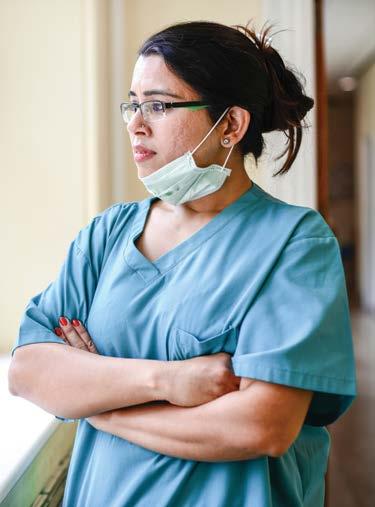
Need more ideas for self-care? There are several nursing organizations that provide resources on self care, including the American Nurses Association, the National Council of State Boards of Nursing, Sigma Theta Tau International Honor Society of Nursing, nurse. org and The Journal of Nursing Education. There isn’t a wrong way to do self-care — except to not do it at all. Schedule time and don’t feel guilty because what you are doing is essential.

• Adult-gerontology nurse practitioners (AGNP) who provide primary care services to older adults, focusing on managing chronic conditions, preventing disease and promoting wellness.
• Pediatric nurse practitioners (PNP) who provide primary care services to infants, children and adolescents, including health maintenance and preventive care.
• Women’s health nurse practitioners (WHNP) who provide specialized care in reproductive and gynecological health, family planning and menopause management.
Other NPs may earn specialty certifications in areas such as cardiology, oncology or emergency medicine.
Clinical nurse specialists are experts in a particular area of health care such as pediatrics, oncology or critical care. They have several broad responsibilities.
CNSs provide direct specialized patient care to help assess, diagnose and manage complex health conditions. They also play key roles in educating and training other nurses on evidence-based practices and protocols within their area of specialty.
CNSs are sometimes called upon to participate in quality improvement initiatives that help to improve patient outcomes, reduce health care costs and implement new practices and technology. Others conduct research and contribute to evidence-based practices in their area of specialty.
Midwifery is a centuries old practice, but in the 1920s and 1930s, states started to outlaw these health care professionals. In the 1960s and 1970s, there was a resurgence of interest in natural childbirth and the American College of Nurse-Midwives was formed in 1955 to promote midwifery.
Today, CNMs provide prenatal care, assist with childbirth and provide gynecological care to women throughout their reproductive lives. They also provide family planning services. According to the Bureau of Labor Statistics, there are 7,750 CNMs in the U.S.
Certified Registered Nurse Anesthetists (CRNA) CRNAs provide anesthesia and pain management services to patients undergoing surgery or other medial procedures. They can be found in hospitals, dental offices, surgical centers and medical centers. According to Nurse.org, they rank 10th in the list of best health care jobs in 2023 and are the highest-paid nurses in 2023.
To become a CRNA, a nurse must have a doctorate degree focusing on anesthesia, complete extensive clinical training and pass a certification exam.
When most people hear the name of Walt Whitman, they think of him as the famous American poet who wrote “Leaves of Grass.” However, he also served as a nurse during the American Civil War and his experiences influenced his later work as a poet.
Early on in the Civil War, Whitman was working as a freelance writer and started visiting New York hospitals to interview soldiers and was profoundly affected by their suffering. He traveled to Washington, D.C., in 1862 to care for his wounded brother. It was then he became motivated to volunteer as a nurse. At the time, there were not formal education or training requirements or standards for nurses. They
learned by doing and most nurses were volunteers.
The American Association for the History of Nursing reports that he earned the trust and respect of doctors and on Jan. 1, 1863, was put in charge of a trainload of wounded soldiers who were being transferred to a hospital. He met with soldiers, acting as a scribe for their messages to families and comforting them with his calm and concern.
It was at that point he decided to stay and work in hospitals until the war was over.
Whitman took a low-paying job as a clerk to provide enough money so he could volunteer at hospitals, which is where he spent almost all his free time. He would care for
the wounded and the sick, bringing soldiers food and writing letters for them. He often spent what little money he had on supplies and would stay at a soldier’s side as he died.
Those experiences would influence his poetry, with nurses and their labor showing up in his writing.
In “The Wound-Dresser,” Whitman describes the work of a nurse caring for wounded soldiers and the deep emotional connection that develops:
“With hinged knees and steady hand to dress wounds,
I am firm with each, the pangs are sharp yet unavoidable, One turns to me his appealing eyes—poor boy! I never knew you, Yet I think I could not refuse this moment to die for you, if that would save you.”
In other writing, “Nursing the Wounded and the Dying,” he talks at length about his experience, naming names and describing what he did as a nurse. He explains how being a nurse forever changed him as a poet:
“I saw the wounded and the dead, and never forget them, I recall the experience sweet and sad,
I send my love sincerely to each and all,
For every sick and wounded soldier is dear to me as a son or brother.
Ever since have they been with me,
They have fused ever since in my poems,
They are here forever in my poems—
No poem proud, I chanting bring to thee,
But a cluster containing night’s darkness and blood-dripping wounds,
And psalms of the dead.”
Whitman described his years of service as a privilege and said it was the most profound lesson of his life.
Historically, Whitman’s writings also provide insight into what the nursing profession was like during the Civil War period and what the conditions of the hospitals were. He was considered a minister of mercy and his legacy continues to inspire.



